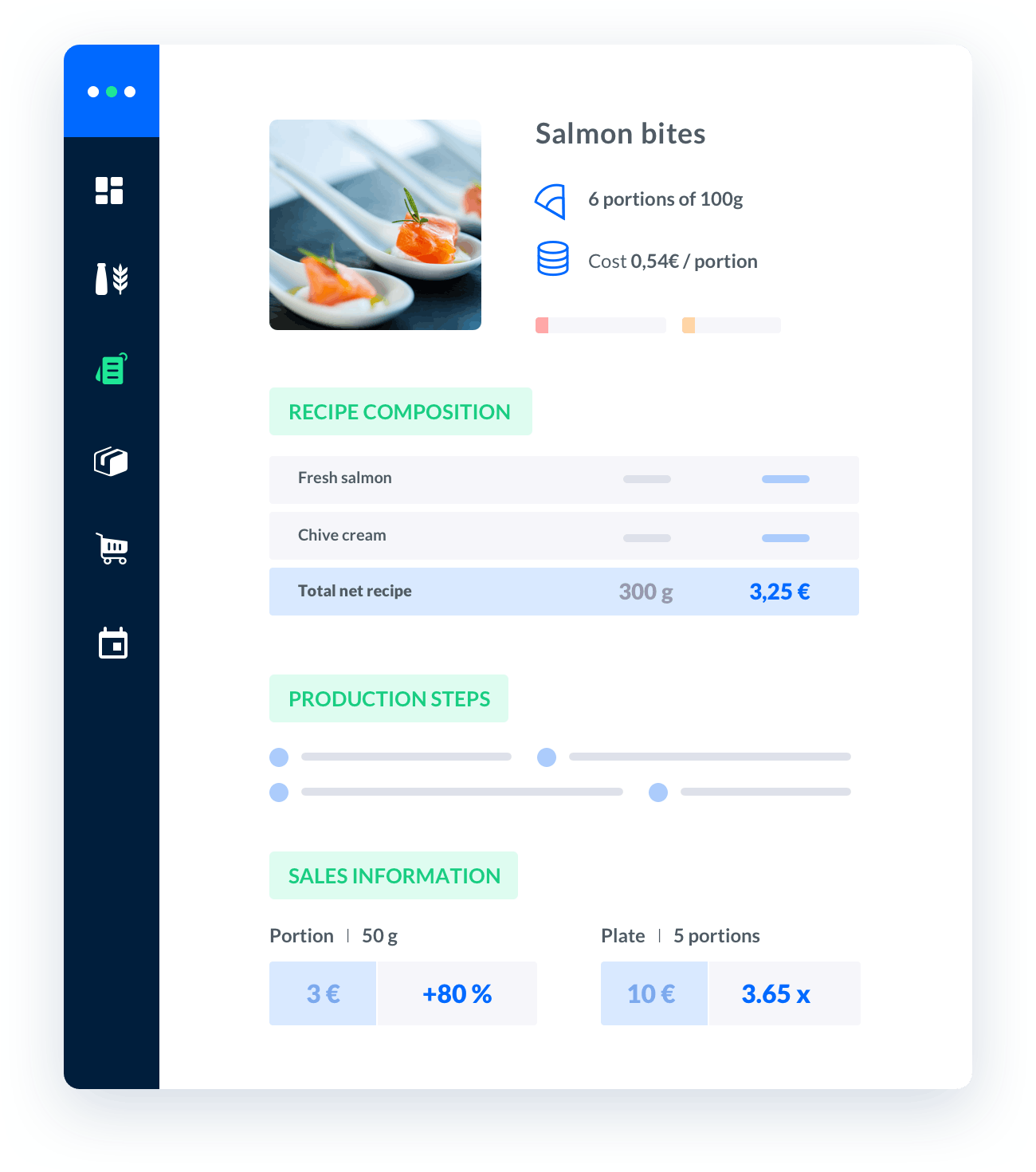how to calculate cost per serving
The cost per serving is a crucial metric for any catering business as it helps in determining the profitability of a dish or a menu item.By accurately calculating the cost per serving, professionals in the catering industry can make informed decisions about pricing, portion sizes, and menu offerings.

Melba: the food cost app to optimize the profitability of your restaurant
Discover how to optimize the profitability of your restaurant with melba

The ultimate guide to food cost restaurant
Learn more about the food cost basis and how to reduce your food cost percentage
The cost per serving is a crucial metric for any catering business as it helps in determining the profitability of a dish or a menu item. By accurately calculating the cost per serving, professionals in the catering industry can make informed decisions about pricing, portion sizes, and menu offerings.
Understanding Cost per Serving
Cost per serving refers to the cost incurred by a catering business to produce one serving of a particular dish or menu item. It takes into account various factors such as ingredient costs, labor costs, overhead expenses, and any additional costs associated with the preparation and presentation of the dish.
Calculating Ingredient Costs
To calculate the cost per serving, it is essential to determine the ingredient costs accurately. This involves:
- Identifying the ingredients used in a recipe.
- Recording the quantity of each ingredient required.
- Estimating the cost of each ingredient based on current market prices.
- Multiplying the quantity of each ingredient by its respective cost.
- Summing up the costs of all ingredients to obtain the total ingredient cost.
Considering Labor Costs
In addition to ingredient costs, labor costs play a significant role in calculating the cost per serving. Labor costs include the wages or salaries of the chefs, cooks, and other kitchen staff involved in the preparation of the dish. It is essential to estimate the time required for preparation and multiply it by the labor cost per hour to determine the labor cost for each serving.
Accounting for Overhead Expenses
Overhead expenses are the indirect costs associated with running a catering business. These expenses include rent, utilities, insurance, equipment maintenance, and other administrative costs. To calculate the cost per serving accurately, it is necessary to allocate a portion of the overhead expenses to each dish or menu item. This can be done by dividing the total overhead expenses by the number of servings produced within a specific time period.
Formula for Calculating Cost per Serving
The cost per serving can be calculated using the following formula:
Cost per Serving = (Total Ingredient Cost + Labor Cost + Allocated Overhead Expenses) / Number of Servings
Example Calculation
Let's consider an example to understand the calculation of cost per serving:
Ingredient Costs:
- Chicken Breast: 2 pounds x $4/pound = $8
- Vegetables: 1 pound x $2/pound = $2
- Spices and Seasonings: $1
Labor Costs:
- Preparation Time: 30 minutes
- Labor Cost per Hour: $15
- Labor Cost per Serving: (30 minutes / 60 minutes) x $15 = $7.50
Overhead Expenses:
- Total Monthly Overhead Expenses: $2000
- Total Number of Servings in a Month: 500
- Allocated Overhead Expenses per Serving: $2000 / 500 = $4
Final Calculation:
Cost per Serving = ($8 + $2 + $1 + $7.50 + $4) / 1 = $22.50
Therefore, the cost per serving for this particular dish is $22.50.
Importance of Calculating Cost per Serving
Calculating the cost per serving is essential for various reasons:
- Menu Pricing: The cost per serving helps in setting appropriate prices for menu items, ensuring profitability while remaining competitive in the market.
- Profitability Analysis: By comparing the cost per serving with the selling price, catering professionals can determine the profitability of each dish or menu item.
- Menu Engineering: Understanding the cost per serving allows professionals to identify high-profit and low-profit items, enabling them to make informed decisions about menu engineering and optimization.
- Portion Control: Cost per serving analysis helps in determining optimal portion sizes, ensuring that customers receive value for their money while maintaining profitability.
- Cost Control: By regularly calculating and monitoring the cost per serving, professionals can identify cost-saving opportunities, reduce wastage, and improve overall efficiency in the kitchen.
By accurately calculating the cost per serving, catering professionals can make informed decisions, maximize profitability, and provide an exceptional culinary experience for their customers.
+





